Sparta › Ancient Greek Music » Ancient origins
Articles and Definitions › Contents
- Sparta › Ancient History
- Ancient Greek Music › Antique Origins
Ancient civilizations › Historical and archaeological sites
Sparta › Ancient History
Definition and Origins

Sparta was one of the most important Greek city -states throughout the Archaic and Classical periods and was famous for its military prowess. The professional and well-trained Spartan hoplites with their distinctive red cloaks, long hair, and lambda-emblazoned shields were probably the best and most feared fighters in Greece, fighting with distinction at such key battles as Thermopylae and Plataea in the early 5th century BCE. The city was also in constant rivalry with the other major Greek citiesof Athens and Corinth and became involved in two protracted and hugely damaging conflicts, the Peloponnesian Wars of the mid- to late 5th century BCE and the Corinthian Wars of in the early 4th century BCE.
SPARTA IN MYTHOLOGY
In Greek mythology the founder of the city was Lacedaemon, a son of Zeus, who gave his name to the region and his wife's name to the city. Sparta was also an important member of the Greek force which participated in the Trojan War. Indeed, the Spartan king Menelaos instigated the war after the Trojan prince Paris abducted his wife Helen, offered to Paris by the goddess Aphrodite as a prize for choosing her in a beauty contest with fellow goddesses Athena and Hera. Helen was said to have been the most beautiful woman in Greece and Spartan women in general enjoyed a reputation not only for good looks but also spirited independence.
ESTABLISHING REGIONAL DOMINANCE
Sparta was located in the fertile Eurotas valley of Laconia in the southeast Peloponnese. The area was first settled in the Neolithic period and an important settlement developed in the Bronze Age. Archaeological evidence, however, suggests that Sparta itself was a new settlement created from the 10th century BCE.
In the late 8th century BCE, Sparta subjugated most of neighbouring Messenia and its population was made to serve Spartan interests. Sparta thus came to control some 8,500 km² of territory making the polis or city-state the largest in Greece and a major player in Greek politics. The conquered peoples of Messenia and Laconia, known as perioikoi, had no political rights in Sparta and were often made to serve with the Spartan army. A second and lower social group was the helots, semi-enslaved agricultural labourers who lived on Spartan-owned estates. Intermediary between the helots and the perioikoi were the liberated helots or neodamōdeis. Spartan citizens did not indulge in farming activities themselves but devoted their time to military training, hunting, war, and politics. The helots could keep a percentage of the produce they cultivated, but they were also regularly purged to keep them firmly in their social place and they could also be conscripted into military duties in times of war.
[SPARTA WAS] EVERYWHERE ADMIRED AND NOWHERE IMITATED. XENOPHON
The relationship between citizens and helots was an uneasy one and there were sometimes uprisings, notably in the 7th century BCE which contributed to Sparta's defeat to Argos at Hysiae in 669 BCE. Sparta gained revenge on Argos in c. 545 BCE but then lost a battle with Tegea shortly after. This regional instability brought about the Peloponnesian League (c. 505 to 365 BCE) which was a grouping of Corinth, Elis, Tegea, and other states (but never Argos), where each member swore to have the same enemies and allies as Sparta. Membership of the League did not necessitate the paying of tribute to Sparta but rather the provision of troops. The League would allow Sparta to establish hegemony over and dominate the Peloponnese until the 4th century BCE. In addition to local politics, from the 6th century BCE Sparta began to broaden her horizons by, for example, creating an alliance with Croesus of Lydia and sending an expedition against Polycrates of Samos in c. 525 BCE.
RIVALRY WITH ATHENS, THEBES & CORINTH
Sparta, under Cleomenes (c. 520-490 BCE), overthrew the tyrants of Athens but the resulting democracy put a stop to any Spartan ambitions in the city. Sparta was, however, an ally with Athens in the defence of Greece against the invasion of Persian king Xerxes, and fought with distinction at Thermopylae in 480 BCE and at Plataea one year later. From 480 to 460 BCE regional rivalries and revolts by the helots damaged Sparta and worse were to follow when rivalry with Athens developed into the Peloponnesian Wars from c. 460 to 446 BCE and again from 431 to 404 BCE. The long wars were damaging to both sides but Sparta, with some Persian help, finally won the conflict when Lysander destroyed the Athenian fleet at Aegospotami in 405 BCE. Sparta's position as the number one city-state in Greece, though, was to be short-lived.
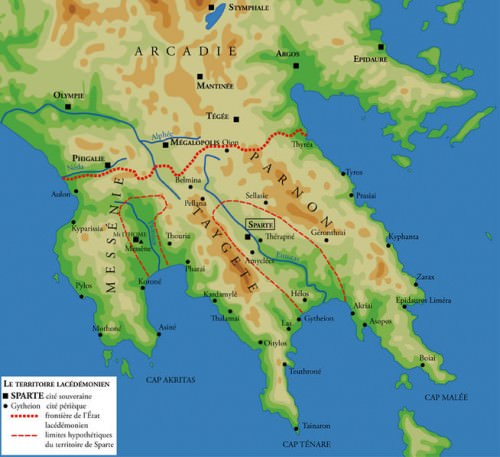
Spartan Territory
Continued Spartan ambitions in central and northern Greece, Asia Minor, and Sicily once again dragged the city into another protracted conflict, the Corinthian Wars with Athens, Thebes, Corinth, and Persia from 396 to 387 BCE. The result of the conflict was the 'King's Peace' where Sparta ceded her empire (for which she in any case lacked the necessary bureaucratic apparatus to manage properly) to Persian control but Sparta was left to dominate Greece. However, trying to crush Thebes, Sparta lost the crucial battle of Leuctra in 371 BCE against the brilliant Theban general Epaminondas. Thebes then annexed parts of Messenia and Sparta became thereafter only a second-rate power.
After briefly challenging Macedonian control in the 3rd century BCE and being besieged by Pyrrhus in 272 BCE, Sparta never regained her former glory and she was compelled to join the Achaean Confederacy in 195 BCE. Under Roman control Sparta was permitted to leave the confederacy in 147 BCE which prompted the Achaean War. However, as a free city in the Roman world things did improve for Sparta, and the city enjoyed good relations with her conquerors but the end finally came for Sparta in 396 CE when the Visigoth king Alaric sacked the city.
GOVERNMENT
The Spartan political system was unusual in that it had two hereditary kings from two separate families. These monarchs were particularly powerful when one of them led the army on campaign. The kings were also priests of Zeus and they sat on the council of elders known as the gerousia. This body consisted of 28 over-60 years of age males who held the position for life.The gerousia led the citizen assembly, probably proposing issues on which to vote and it was also the highest court in Sparta.The assembly (Ekklēsia) met once a month and was open to all citizens who voted by the simple method of shouting. There was also an executive committee of five ephors ( ephoroi ) chosen by lot from the citizen body, able only to serve for a maximum of one year and who were ineligible for future office. Two of the ephors also accompanied one of the kings when on campaign. Just how these different political elements interacted is not known for certain but clearly a degree of consensus was necessary for the state apparatus to function. It may also explain Sparta's reputation as being a conservative state slow to make decisions in foreign policy.
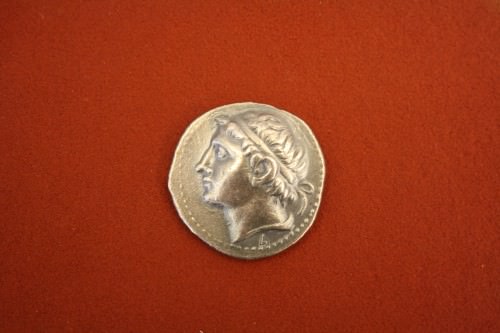
Spartan Silver Tetradrachm
SOCIETY
Like all Greek societies Sparta was dominated by male citizens and the most powerful of those came from a select group of families. These were the landed aristocracy, and following reforms credited to Lycurgus in the 6th century BCE (or even earlier), citizens could not indulge in agricultural activities - this was the lot of the helots - but they had to devote themselves to athletic and military training and politics. Helots could not own property and so could not rise to become full-citizens, and this lack of social mobility would come back to haunt Sparta in later centuries. Reduced by constant wars in the 5th and 4th centuries BCE, the Spartan hoplites ( homoioi ) became dangerously small in number (8,000 in 490 BCE to 700 in 371 BCE), so much so, that non-Spartiate soldiers had to be enlisted and their loyalty and interest in Sparta's ambitions was questionable.
Women in Sparta had a better lot than in other Greek city-states. In Sparta they could own property which they often gained through dowries and inheritances. In fact, women became amongst the richest members of society, as their men were killed in the many wars, and eventually controlled 2/5th of Spartan land. In addition, Spartan women could also move around with reasonable freedom, they could enjoy athletics (done in the nude like men), and even drink wine. All of these freedoms would have been unacceptable in other Greek poleis.
There were foreigners ( xenoi ) in Spartan society but these were not as welcome as in other city-states, and those that did live in Sparta were sometimes forcibly expelled by their overly suspicious and at times positively paranoid hosts.
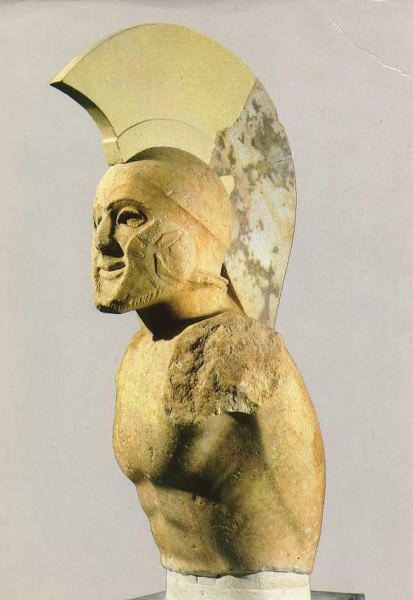
Leonidas
SPARTAN ARMY
For all Spartan citizens there was a strong emphasis on military training and frugal living in communal mess halls where simple food such as barley meal, cheese, figs and wine were the norm. From the age of seven, males had a militaristic upbringing known as the agōgē where they were separated into age groups and lived in barracks. These youths pursued rigorous athletic and military training which became even more demanding from the age of 20, when they joined common mess halls ( syssition) where they often formed homoerotic relations with older, more experienced citizens. This tough training resulted in a professional hoplite army capable of relatively sophisticated battle manoeuvres and made them feared throughout Greece, a fact perhaps evidenced by Sparta's notable lack of fortifications for most of its history.
A peculiar feature of the Spartans and their military was the great importance given to matters of religion. As Herodotus put it, they 'considered the things of the gods more weighty than the things of men'. Pre- and post-battle sacrifices were a common feature of Greek warfare in general but the Spartan army took things one step further and sacrificed before crossing rivers, for example, and even withheld from mobilising the army if an important religious festival was ongoing. Famous episodes where the Spartans put religion above warfare and even national crisis were Marathon and Thermopylae during the Persian Wars.In the former battle they arrived too late to participate and in the latter mobilised only a token force as they felt compelled to first celebrate the Karneia festival in honour of Apollo.
The Spartan hoplite army, however, showed the rest of Greece the way forward towards a greater military professionalism and considering the iconic image of fearless and disciplined hoplites with red cloaks and lambda-emblazoned shields, for the Greeks, admiring Romans and even 21st century film-goers, this is Sparta.
MAP
Ancient Greek Music › Antique Origins
Definition and Origins

Music (or mousike ) was an integral part of life in the ancient Greek world, and the term covered not only music but also dance, lyrics, and the performance of poetry. A wide range of instruments were used to perform music which was played on all manner of occasions such as religious ceremonies, festivals, private drinking parties ( symposia ), weddings, funerals, and during athletic and military activities. Music was also an important element of Greek education and dramatic performances held in theatres such as plays, recitals, and competitions.
MUSICAL ORIGINS
For the ancient Greeks, music was viewed as quite literally a gift from the gods. The invention of specific instruments is attributed to particular deities: Hermes the lyre, Pan the syrinx ( panpipes ) and Athena the aulos (flute). In Greek mythology the Muses personified the various elements of music (in the wide Greek sense of the term) and were said to entertain the gods on Mt. Olympus with their divine music, dancing, and singing. Other mythical figures strongly associated with music are the god of wine Dionysos and his followers the Satyrs and Maenads. Amphion and Thamyres were both famed for their skills playing the kithara (guitar) whilst Orpheus was celebrated as a magnificent singer and lyre player.
THE GREEKS BELIEVED MUSIC COULD HAVE A BENEFICIAL EFFECT ON BOTH THE MIND AND BODY OF THE LISTENER.
The oldest surviving Greek musical instruments are bone auloi which date from the Neolithic Age (7th-4th millennium BCE) and were found in western Macedonia, Thessaly, and Mykonos. The three major civilizations of the Bronze Age in the Aegean(3000 to 1000 BCE), Cycladic, Minoan and Mycenaean, all provide physical evidence of the importance of music in their respective cultures. Marble figurines from the Cyclades represent players of both the aulos and the harp. Cretan hieroglyphic script has three symbols which are musical instruments - two types of harp and a sistrum (or rattle, originally from Egypt ).An alabaster lyre decorated with swan heads survives from Knossos and a fresco at Akrotiri on Thera depicts a blue monkey playing a small triangular lyre. The Minoan 'Harvester Vase' (1500-1450 BCE) from Hagia Triada on Crete depicts a sistrumplayer and clay versions of the instrument have been found in graves across Crete. There is also some evidence that music may have been written down as early as the Bronze Age if a Minoan Linear A text on a wall in Hagia Triada is interpreted as such.
The combining of words and music, melodic and scalar systems, and several of the most popular musical instruments such as the aulos and lyre probably derived from the Near East. However, the Greeks themselves considered the lyre, in particular, as a 'Greek' instrument whilst the aulos is often represented in mythology as an inferior foreign competitor of Eastern origin.Hence, the great Greek god Apollo, who was believed to be the master of the lyre, defeated the Phrygian Satyr Marsyas and his aulos in a musical competition judged by the Muses. The lyre was also the musical instrument, above all others, which young Greeks had to learn in their schooling and was recommended as such by Plato in his Republic.
MUSICAL INSTRUMENTS
Greek musical instruments included stringed, wind, and percussion. By far the most popular were the lyre, aulos (usually double), and syrinx. Other instruments, however, included the rattle ( sistrum and seistron ), cymbals ( kymbala ), guitar ( kithara ), bagpipe ( askaulos ), conch and triton shells ( kochlos ), trumpet ( salpinx ), horn ( keras ), tambourine ( rhoptron ), shallow drum ( tympanon ), clappers ( krotala ), maracas ( phormiskoi ), xylophone ( psithyra ), various versions of the lyre such as the four-stringed lyre ( phorminx ) and the multi-stringed and elongated barbiton, and various types of harps, usually triangular shaped (eg the psalterion ). Two unusual instruments were the rhombos (a wind instrument) which was a flat rhombus pierced with holes, strung on a cord, and played by spinning the cord. The second was the hydraulis, a sophisticated Hellenistic organ which used compressed air and water pressure maintained by two pedals. Incidentally, stringed instruments were always played with the fingers or a plectrum rather than with a bow and in the Classical period, stringed instruments were favoured over wind as they allowed the player to also sing, and for the Greeks words were considered more important than musical sounds.
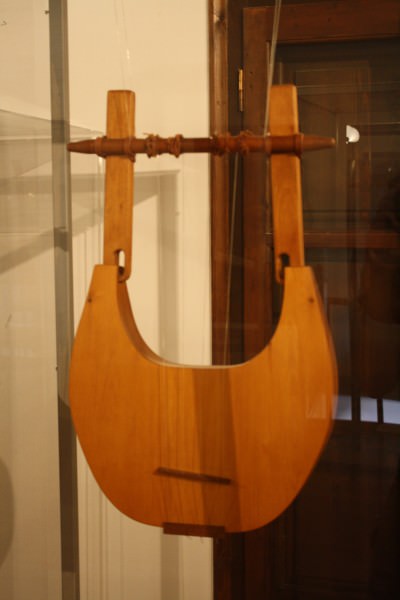
Ancient Greek Forminx
MUSIC THEORY
There is evidence that the Greeks began to study music theory as early as the 6th century BCE. This consisted of harmonic, acoustic, scalar, and melody studies. The earliest surviving (but fragmentary) text on the subject is the Harmonic Elements by Aristoxenos, written in the 4th century BCE. Music also became an element of philosophical study, notably, by the followers of Pythagoras, who believed that music was a mathematical expression of the cosmic order. Music was also held to have certain therapeutic benefits, even medicinal powers over physical and mental illnesses.
In addition, one of the unique contributions the Greeks made to the history and development of music is that it can have a moral and emotional effect on the listener and his or her soul; in short, that music has an ethical role in society. For this reason, Plato, considering them rather decadent, banned instruments capable of producing all of the scales. Likewise, over-complicated rhythms and music with too fast a tempo were considered morally dangerous in the great philosopher's ideal republic.
Regarding written music, 52 pieces of Greek music survive, albeit in a fragmentary form. For example, a musical excerpt from Euripedes' play Orestes survives, as does an inscription of music from the Athenian Treasury at Delphi. The most complete surviving piece of Greek music is the song of Seikilos from a 2nd century BCE tombstone found at Tralleis near Ephesos.
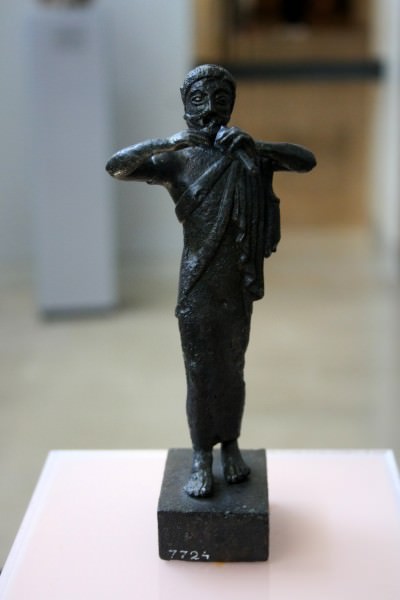
Bronze Aulos Player Figurine
MUSICIANS
Greek musicians were very often the composers and lyricists of the music they performed. Known as the 'makers of songs' or melopoioi, they created melos : a composition of words, tune, and rhythm. There is evidence that musicians enjoyed an elevated status in society as indicated by their particular robes and presence on royal household staff lists. There was even a specific symbol for musicians in the Cretan hieroglyphic script and the later Linear B. Professional musicians were male, although an exception were the courtesans or hetairai who performed at symposia. However, there are depictions in art of female musicians, notably the clay dancing lyre players from Palaikastro. Other professional musicians included the trierauleswho set the beat for the rowers in triremes and trumpet players and choral singers who accompanied marching soldiers.
MUSIC & RELIGION
Music and dancing accompanied processions on special religious occasions in various Greek cities and, amongst the most famous in the Greek world, were the Panathenaia and Great Dionysia festivals of Athens. Certain religious practices were usually performed to music, for example, sacrifices and the pouring of libations. Hymns ( parabomia ) and prayers ( kateuches) were also sung during processions and at the altar itself. These were provided by choral groups of professional musicians, notably aulos players, often attached to particular sanctuaries, for example, the paeanists in Athens and the aoidoi and epispondorchestai in the sanctuary of Asklepius at Epidaurus.
Music, dance, poetry and drama recitals were also a competitive activity in events such as the pan- Hellenic festivals held at Isthmia, Delphi and Nemea. However, as with the athletic competitions, the music contests were of a religious nature in that excellence was offered to honour the gods. There were two types of such musical contest: stephanites (sacred with a symbolic wreath as the prize) and chrematites or thematikoi (with more tangible prizes such as money or precious goods). Sparta, Argos and Paros held the earliest such competitions from the 7th century BCE. In Hellenistic times, musical festivals and competitions became so common that musicians and performing artists began to organize themselves into guilds or Koina.
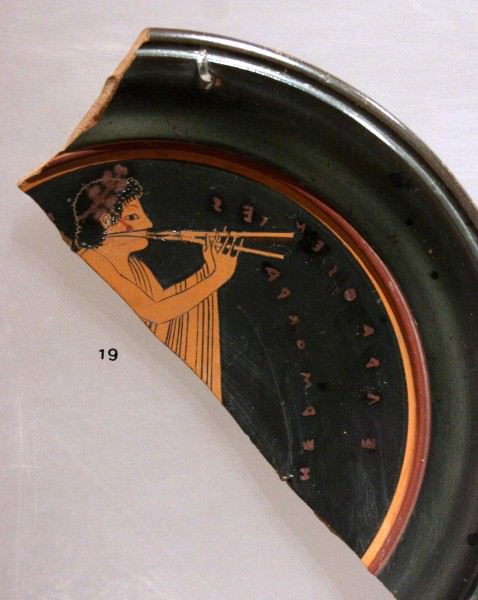
Aulos Player
MUSIC & EDUCATION
Plato informs us that the first schools dedicated to musical education were created by the Cretans. However, the heyday of music in the classroom was during the 6th and 5th centuries BCE when schools of music were established in Athens where pupils aged between thirteen and sixteen were taught to play the lyre and kithara and to sing, accompanied by their teacher on the aulos. Music taught discipline and order and allowed the educated to better appreciate musical performance. Athletics and other sporting activities, another major element of the Greek education, were also done accompanied to music, particularly in order to increase synchronization.
MUSIC FOR PLEASURE
Music was a staple element of the symposium or all-male drinking party. After eating, the men each sang a song ( skolia ) with an aulos, lyre, or barbiton providing backing music. Often they sang amusing satirical songs ( silloi ). Finally, at the end of the evening, it was common for the group to take to the streets as a komos (band of revellers) and sing and dance their way through the town.
Women too could enjoy music in the privacy of their homes. Usually women played stringed instruments and recited poetry to music. In addition, household chores such as weaving and baking were done to music. Children too sang songs ( agermos ) at people's doors to receive small-change and sweets just as carol-singers do today.
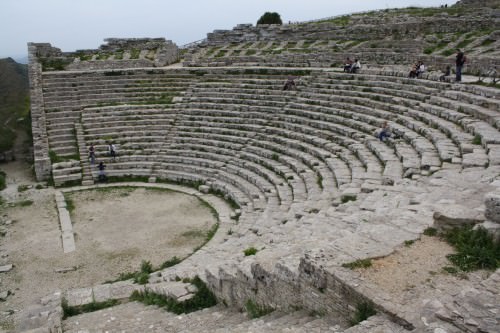
Theatre of Segesta
In the theatre, performances of tragedy, comedy, and drama were all accompanied by music, and singing was provided by a designated chorus which consisted of as many as 24 singers in theatre performances of the 5th century BCE.
MUSIC IN ART
Musicians and musical instruments were a popular subject on frescoes, in sculpture, and on Greek pottery, particularly in the Geometric, black-figure and red-figure styles. Aside from all of the major mythological figures previously mentioned, a notable addition to the subject of music on Greek pottery is the greatest of heroes Hercules. Late Archaic and Early Attic pottery often portray the hero with a kithara, and perhaps this symbolizes the association between physical and musical exercise which are necessary for a properly balanced education. Other great heroes such as Achilles, Theseus, and Paris are also sometimes portrayed playing a musical instrument (usually a lyre), once again reinforcing the dual aims of an aristocratic education and the virtue of music. Also, many school scenes on 5th century BCE pottery depict students with both a lyre and a book-roll, illustrating once again the importance of music in education. Finally, Lekythoi, slim jars for holding perfumes, are commonly found in grave contexts and often have music as the subject of their decoration, perhaps in an attempt to ensure that the deceased was accompanied by music on their journey into the next life.
See other Related Contents ››
LICENSE:
Article based on information obtained from these sources:with permission from the Website Ancient History Encyclopedia
Content is available under License Creative Commons: Attribution-NonCommercial-ShareAlike 3.0 Unported. CC-BY-NC-SA License